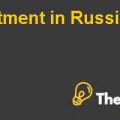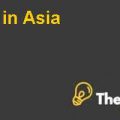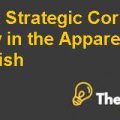Introduction
In 1980, the French economy as a whole was growing rapidly and the expanded market with the European Community provided opportunities for Vivendi to grow. The business took advantage of the opportunity and grew rapidly.In 1995, the country's real GDP growth fell from 2.1% to 1.5% from 1995 to 1996. Investment growth became negative and consumer spending reduced. Moreover, the unemployment reached record-levels of12.8%. CGE faced many difficulties to operate in this environment.
In 1995, the government tried to liberalize the labor market led to nationwide strikes .A lack of transparency and a weak corporate governance system developed fears in the minds of investors. In 1997, foreign investors' confidence in the opportunities in French market had grown and the overall level of foreign ownership of French equity market to 35%.
Corporate Governance Issues
The operations of the company were affected by the ways it was governed.Dejouany’s followed the policy of growth for this business.His decisions were based on relationships and personal experiences. He trusted his managers and their decisions in the market they used to take decisions for. However, this strategy proved to be disastrous when their investment in the real estate collapsed.
Cross Shareholdings:
The business also diversified through cross-shareholdings whereby the company invested in other companies and in return allow other companies to invest in Vivendi. These companies achieved 24.3% of voting rights and shareholdings in late 1998. The control of the company was affected by the cross-shareholdings which took place.
Cash flow Problems:
These diversifications had to be financed by the debt taken from lenders increasing the gearing levels and the financial risk for the company. The large amount of interest paid also affected the net profit for the company adversely. The strain of cash resources was large enough for the company to face liquidity crisis.The collapse of the real estate market followed by the corruption scandal in the water business defamed the company and investors began to lose their confidence in the company.
Human
What is the New Corporate Strategy?
Messier, the new Chairman and the CEO for the company directed its company to return to its core businesses of Utilities, Communication, and Construction and Property. He wants to reduce dependence on construction and property due to its collapse state and focus on communication, however it did completely divested from the construction business due to the issue of liquidity.He changed the organizational culture and structure to a large extent and showed the overall positive impact for this.
He also attempted to get rid of all non-profitable strategies and carry out new profit making schemes.He hit all the required changes for this.He restructures the whole organization through the consolidation procedure. Management philosophy for its construction company SGE also changed: SGE was no longer to pursue volume, but rather profitability. Messier is the person who changed the name of CGE to Vivendi and created a new and brand name and image for the company.
Divestment
Then he adopted the policy of paying the debt of the business by selling off the assets of non-core business activities to reduce gearing which has reached the ratio of 155% in 1995. In 1995,1996 and 1997, the assets worth 6 billion Ffr, 13.3 billion Ffr and 12 billion Ffr were sold. The holdings in other French companies were also reduced.
Partnerships
In order to increase the cash resources of the company to meet capital requirements in the fast growth areas such as the market of cellular and fixed line telephony, he developed alliances with wealthy partners. For instance,he restructured the telecommunication operations, SFR, to create Cegetel which formed an alliance with British Telecom which contributed 8.85 billion Ffr to the alliance.
Vivendi Revitalizing a French Conglomerate Case Solution
Restructuring
He began to consolidate its 2714 subsidiaries in order to take advantage of costs savings. First of all, the loss making seven property subsidiaries were consolidated under the company Compagnie Generale de Immobilier (CGIS).
Multiple subsidiaries were also consolidated in order to be closer the municipalities served by CGE. The plan was to reduce the number of subsidiaries to 10 regional branches from 32. This increased the number of customers served by one regional branch.
Structures and Systems
He also introduced changes to the structures and the systems of the business which are explained in detail below:
He established a new headquarter in Paris to occupy the functions of legal, human resources, finance and investor relations which was kept separate from water headquarters. Each division was given clear targets based on return on invested capital taking into account the risks faced by these divisions. The authority of treasury of each division was restricted in the way that if they need funds over certain limit, it has to be approved by the corporate head office................
This is just a sample partial case solution. Please place the order on the website to order your own originally done case solution.













